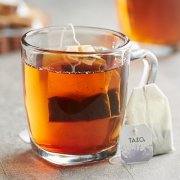A detailed introduction to the method of variety treatment in coffee producing areas of Tanzania, Africa
African Tanzanian coffee
Coffee beans in Tanzania are of extraordinary quality. They are produced in the Mohi district near Mount Kilimanjaro. The mountains with a height of 3,000 to 6,000 feet are the most suitable areas for growing coffee. The fertile volcanic ash gives the coffee here a strong texture and soft acidity. It exudes delicate aromas and contains aromas of wine and fruit, making people taste endless aftertaste. After drinking Tanzanian coffee, I always feel a soft and mellow earthy smell at the corners of my mouth. Coffee gourmets often use words such as "wild" or "wild" to describe it. It can be said that pure Tanzanian coffee is "the most African coffee".
Coffee producing areas:
Kilimanjaro 、 Ruvuma 、 Mbeya
Coffee varieties:
Bourbon (Bourbon) and Kent (Kent)
Treatment method:
Washing treatment.
Grading criteria:
Coffee in Tanzania is graded in the same way as in Kenya, both according to the size of coffee beans. When screening, let the raw coffee beans pass through the screen with fixed-size holes. The larger the number of the screen, the larger the particles of the raw coffee beans.
AA grade: particle size (Screen Size) between 17mm and 18mesh (7.20mm screen)
AB grade: particle size (Screen Size) between 15mm and 16mesh (6.8mm~6.2mm screen)
PB: round raw beans, accounting for about 10% of all coffee beans
Class C: the particle size (Screen Size) is between 12 and 14 mesh (4.8mm~5.6mm screen).
Harvest time:
Kilimanjaro producing area: July-December every year.
Ruvuma and Mbeya producing areas: June to October every year.
Coffee Development in Tanzania:
Coffee exports from Tanzania (Tanzania) play an important role in the whole national economy. In the past, the coffee industry in Tanzania has been dominated by manor cultivation, but now more than 85% are grown by small farmers. Many small farmers form cooperative organizations, the most important of which is the Kilimanjaro Cooperative Alliance (KilimanjaroCooperativeUnion, referred to as KNCU). Tanzanian coffee is sold by the Tanzanian Coffee Management Council (TanzanianCoffeeMarketingBoard, TCMB) to private exporters by auction. In the 1980s, most coffee sales in Tanzania shifted from auctions to being sold directly to the Tanzania Coffee Management Committee. That has changed and the coffee industry is being reformed to allow individuals or groups to buy coffee in the future, when coffee will be graded in different ways in order to attract buyers from Germany, Finland, the Netherlands, Belgium and Japan.
Important Notice :
前街咖啡 FrontStreet Coffee has moved to new addredd:
FrontStreet Coffee Address: 315,Donghua East Road,GuangZhou
Tel:020 38364473
- Prev

Detailed introduction of the method of Variety treatment in African Coffee producing areas in Rwanda
African Rwanda Coffee Inland Eastern Africa the country of Rwanda is located in the middle of the continent, not far from Kenya, one of the world's leading coffee countries. It was not until the early 20th century that the first coffee trees arrived in Rwanda, but it was another three decades before Rwanda's coffee production began to take off. A desolate country that developed coffee culture under the impact of the war. After the war subsided, farmers
- Next

What's the difference between Earl Grey Tea and black tea? When will the rich Earl's seasoned tea be ready?
Earl Grey tea originated in England in the 1820s and later became one of the most popular kinds of tea in the western world. The unique added flavor of bergamot citrus fruits gives Earl Grey tea a unique aroma and flavor, which was originally intended to make the new Indian black tea have the citrus quality naturally found in Chinese high-quality black tea. With the popularity of classic recipes, Earl Grey made tea.
Related
- Beginners will see the "Coffee pull flower" guide!
- What is the difference between ice blog purified milk and ordinary milk coffee?
- Why is the Philippines the largest producer of crops in Liberia?
- For coffee extraction, should the fine powder be retained?
- How does extracted espresso fill pressed powder? How much strength does it take to press the powder?
- How to make jasmine cold extract coffee? Is the jasmine + latte good?
- Will this little toy really make the coffee taste better? How does Lily Drip affect coffee extraction?
- Will the action of slapping the filter cup also affect coffee extraction?
- What's the difference between powder-to-water ratio and powder-to-liquid ratio?
- What is the Ethiopian local species? What does it have to do with Heirloom native species?

